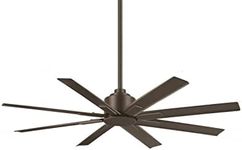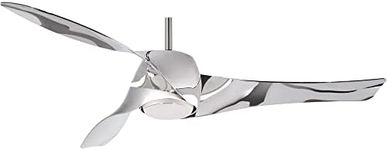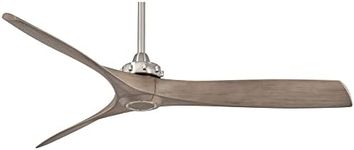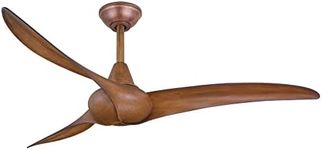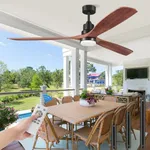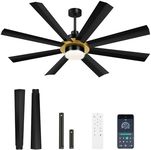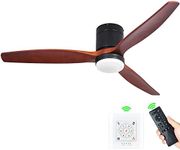Buying Guide for the Best Minka Aire Ceiling Fans
Choosing the right ceiling fan can significantly enhance the comfort and aesthetics of your living space. When selecting a ceiling fan, it's important to consider various factors such as the size of the room, the fan's airflow efficiency, the design, and additional features that may suit your needs. Understanding the key specifications will help you make an informed decision and ensure that the fan you choose is the best fit for your home.Blade SpanBlade span, also known as blade sweep, refers to the diameter of the circle that the fan blades create when in motion. This spec is crucial because it determines the fan's ability to circulate air effectively in a given space. Blade spans typically range from 29 inches to 60 inches or more. For small rooms (up to 75 square feet), a blade span of 29-36 inches is ideal. Medium-sized rooms (76-144 square feet) benefit from a 36-42 inch span, while large rooms (144-225 square feet) require a 44-50 inch span. For very large spaces (over 225 square feet), consider a blade span of 50 inches or more. Choose a blade span that matches the size of your room to ensure optimal airflow.
CFM (Cubic Feet per Minute)CFM measures the volume of air a fan moves per minute. This spec is important because it indicates the fan's efficiency in circulating air. Higher CFM values mean better airflow and cooling performance. Fans typically range from 2,000 to 10,000 CFM. For small rooms, a CFM of 2,000-3,000 is sufficient. Medium rooms require 3,000-4,000 CFM, while large rooms need 4,000-6,000 CFM. For very large spaces, look for fans with a CFM of 6,000 or more. Consider your room size and desired airflow to select a fan with the appropriate CFM rating.
Motor TypeThe motor type in a ceiling fan affects its performance, noise level, and energy efficiency. There are two main types: AC (Alternating Current) and DC (Direct Current) motors. AC motors are common, reliable, and generally less expensive, but they can be noisier and less energy-efficient. DC motors are quieter, more energy-efficient, and offer more speed options, but they tend to be pricier. If you prioritize energy savings and quiet operation, a fan with a DC motor is a good choice. For standard use, an AC motor will suffice.
Mounting OptionsMounting options determine how the fan is installed and its suitability for different ceiling heights. There are three main types: flush mount, downrod mount, and angled mount. Flush mount fans are ideal for low ceilings (less than 8 feet) as they sit close to the ceiling. Downrod mount fans are suitable for standard to high ceilings (8 feet or higher) and come with a rod that lowers the fan to the optimal height. Angled mount fans are designed for sloped or vaulted ceilings. Choose a mounting option that matches your ceiling height and design to ensure proper installation and performance.
Control OptionsControl options refer to how you operate the fan, including pull chains, wall controls, and remote controls. Pull chains are basic and require manual operation, making them suitable for simple setups. Wall controls offer more convenience and can include features like speed adjustment and light control. Remote controls provide the highest level of convenience, allowing you to operate the fan from anywhere in the room. Some fans also offer smart controls that integrate with home automation systems. Consider your preference for convenience and ease of use when selecting control options.
Design and AestheticsThe design and aesthetics of a ceiling fan can significantly impact the look and feel of your room. Fans come in various styles, from traditional to modern, and finishes like wood, metal, and plastic. Consider the overall decor of your room and choose a fan that complements it. Additionally, some fans come with integrated lighting, which can add both functionality and style. Think about the visual appeal and how the fan will blend with your existing decor to make the best choice.
Energy EfficiencyEnergy efficiency is an important consideration, especially if you plan to use the fan frequently. Look for fans with the ENERGY STAR label, which indicates they meet strict energy efficiency guidelines. Energy-efficient fans use less electricity, reducing your energy bills and environmental impact. Consider the fan's wattage and airflow efficiency (CFM per watt) to gauge its energy performance. If energy savings are a priority, opt for a fan with high efficiency ratings.

